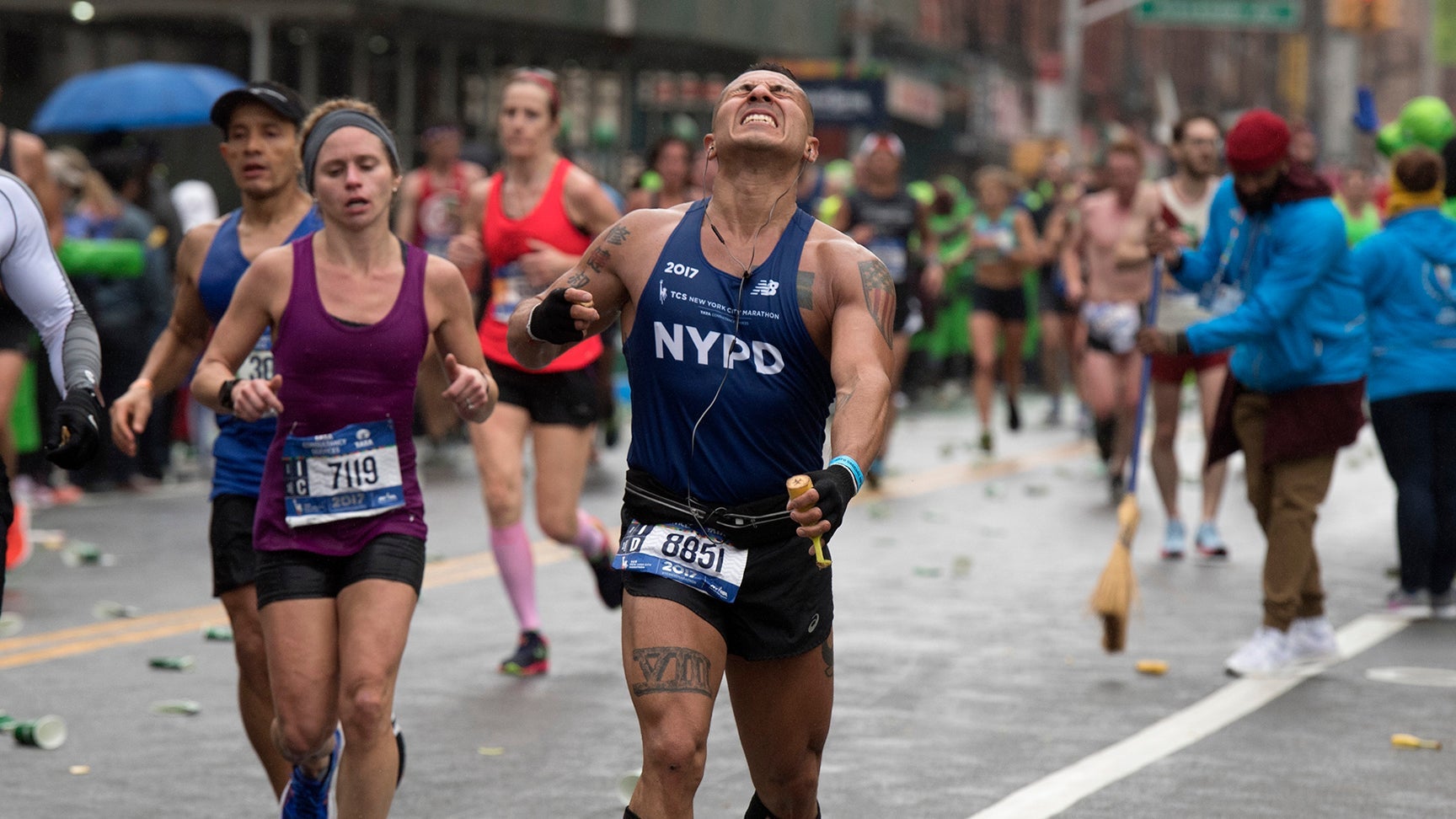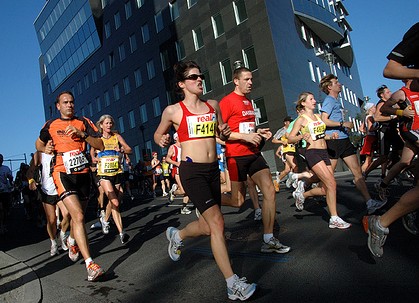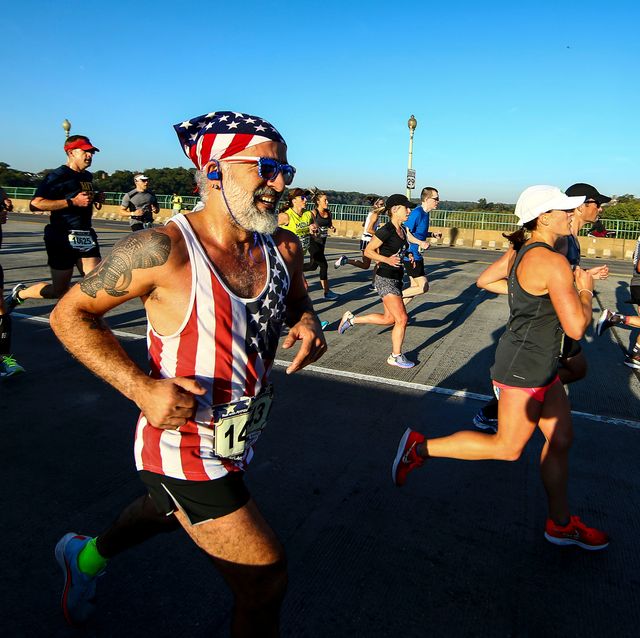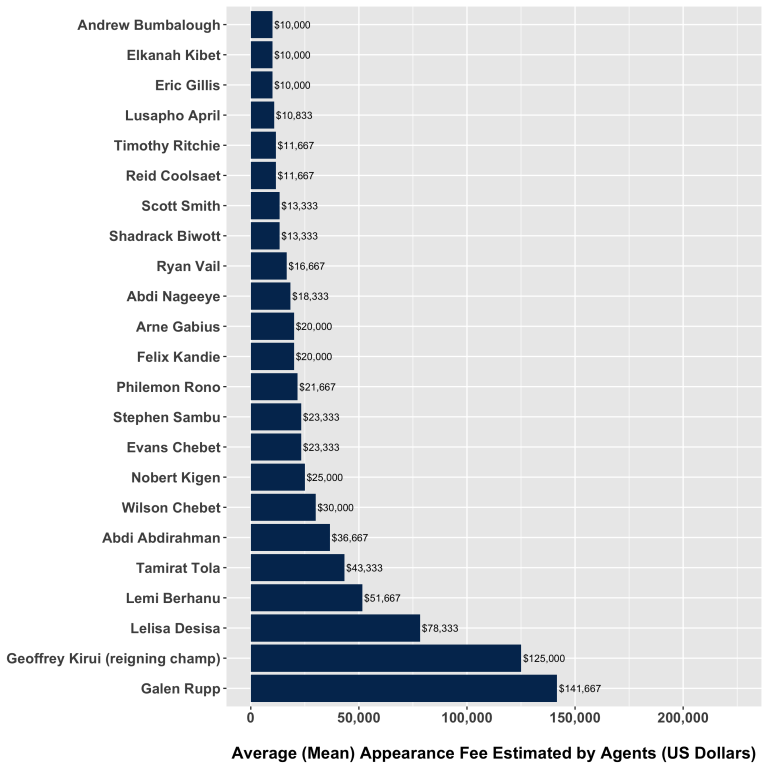What Happens When a Marathon Runner Hits the Wall
When a marathon runner hits the wall, they experience a sudden onset of fatigue and a significant drop in performance, often due to depleted glycogen stores in the muscles. This phenomenon is commonly referred to as “bonking”, and can result in feelings of extreme exhaustion, mental fogginess, and difficulty moving forward.
Marathon running is a test of endurance and mental strength, but hitting the wall can be a daunting and demoralizing experience for even the most dedicated athletes. Understanding the physiological and psychological impact of hitting the wall is crucial for runners seeking to overcome this formidable obstacle.
We will explore the causes and symptoms of hitting the wall, discuss strategies for preventing it, and offer tips for overcoming this challenging phenomenon to help marathon runners reach their goals and perform at their best.

Credit: m.youtube.com
The Marathon Runner’s Wall
While running a marathon, hitting the wall signals physical and mental exhaustion. At this point, runners experience depletion in energy reserves, causing a significant drop in performance. Proper training and nutrition can help prevent hitting the wall during a race.
One of the most challenging moments for a marathon runner is when they hit the wall. This phenomenon, also known as bonking, is a physical and mental obstacle that can occur during a long-distance race. When a runner hits the wall, their body and mind struggle to sustain the pace, often leading to physical and mental exhaustion. The depletion of glycogen stores plays a crucial role in this energy crash.
Physical And Mental Exhaustion
During a marathon, a runner exerts an immense amount of physical effort, pushing their body to its limits. As the miles add up, their muscles begin to fatigue, and fatigue slowly seeps into their mind as well. A marathon runner experiencing this physical and mental exhaustion may start feeling sluggish, with their legs becoming heavy and their thoughts clouded.
The effects of physical and mental exhaustion can be extreme, leading to decreased coordination, impaired decision-making, and a general feeling of weakness. A runner’s form may start to deteriorate, with their once perfect stride becoming a shuffling movement. This level of exhaustion can make every step feel like a monumental task, adding to the odds of hitting the wall.
Depletion Of Glycogen Stores
Our bodies rely on glycogen, a form of stored carbohydrates, to fuel physical activity. During a marathon, a runner’s body rapidly depletes its glycogen stores, and once these stores are exhausted, the body struggles to maintain its energy levels. This depletion leads to a sudden drop in performance and can be a significant contributor to hitting the wall.
The importance of maintaining glycogen levels throughout a marathon cannot be overstated. Runners typically load up on carbohydrates in the days leading up to the race, but even with this preparation, glycogen stores can run dry after a few hours or 20 miles of intense running. As the body runs out of its primary fuel source, it switches to utilizing fat as energy, which is a much less efficient process. This shift can make runners feel as if they’ve hit a wall, as their energy reserves become depleted.
In a bid to avoid hitting the wall, marathon runners often consume energy gels, sports drinks, or snacks during the race to replenish their glycogen stores. These quick sources of carbohydrates provide a temporary boost, but if not managed strategically, they can lead to blood sugar spikes and crashes, adding another layer of challenge to the already grueling endurance event.
Understanding the physical and mental challenges that come with hitting the wall can help marathon runners better prepare for this obstacle. By training the body to become more efficient at utilizing glycogen stores and adopting effective nutrition strategies, runners can increase their chances of overcoming the wall and finishing the race strong.
Symptoms Of Hitting The Wall
When a marathon runner hits the wall, it can be a drastic and challenging experience. The body’s energy stores become depleted, and the runner may start to experience various symptoms. Recognizing these symptoms is essential for addressing and potentially preventing this phenomenon. Let’s explore some of the common symptoms of hitting the wall.
Sudden Fatigue And Weakness
Hitting the wall often results in sudden fatigue and weakness. Runners may find themselves struggling to maintain their pace as their muscles begin to feel heavy and lethargic. This abrupt onset of exhaustion can greatly impede the runner’s ability to continue the race at their previous level of performance.
Mental Fog And Confusion
Another prevalent symptom of hitting the wall is the onset of mental fog and confusion. The depletion of the body’s energy reserves can lead to impaired cognitive function, making it challenging for runners to maintain focus and clarity. This mental haziness can escalate the physical strain of the marathon, compounding the overall struggle for the runner.
Effects On Performance
When a marathon runner hits the wall, it can have severe effects on their performance. The body’s depletion of glycogen stores can lead to a significant decrease in speed and an inability to maintain pace. Understanding these effects is crucial for both runners and coaches to develop strategies to overcome the challenges and improve performance.
Significant Decrease In Speed
At the point of hitting the wall, marathon runners experience a significant decrease in speed. The lack of glycogen makes it challenging for the muscles to function at their optimal level, causing a notable reduction in the pace at which the runner can continue. This drastic decrease in speed can be discouraging for the runner and impact their overall performance.
Inability To Maintain Pace
When the wall is hit, runners often find themselves unable to maintain their planned pace. The lack of energy reserves causes fatigue to set in, leading to a struggle in keeping up with the desired speed. This inability to maintain the pace not only affects the runner’s physical performance but also has a significant impact on their mental state.
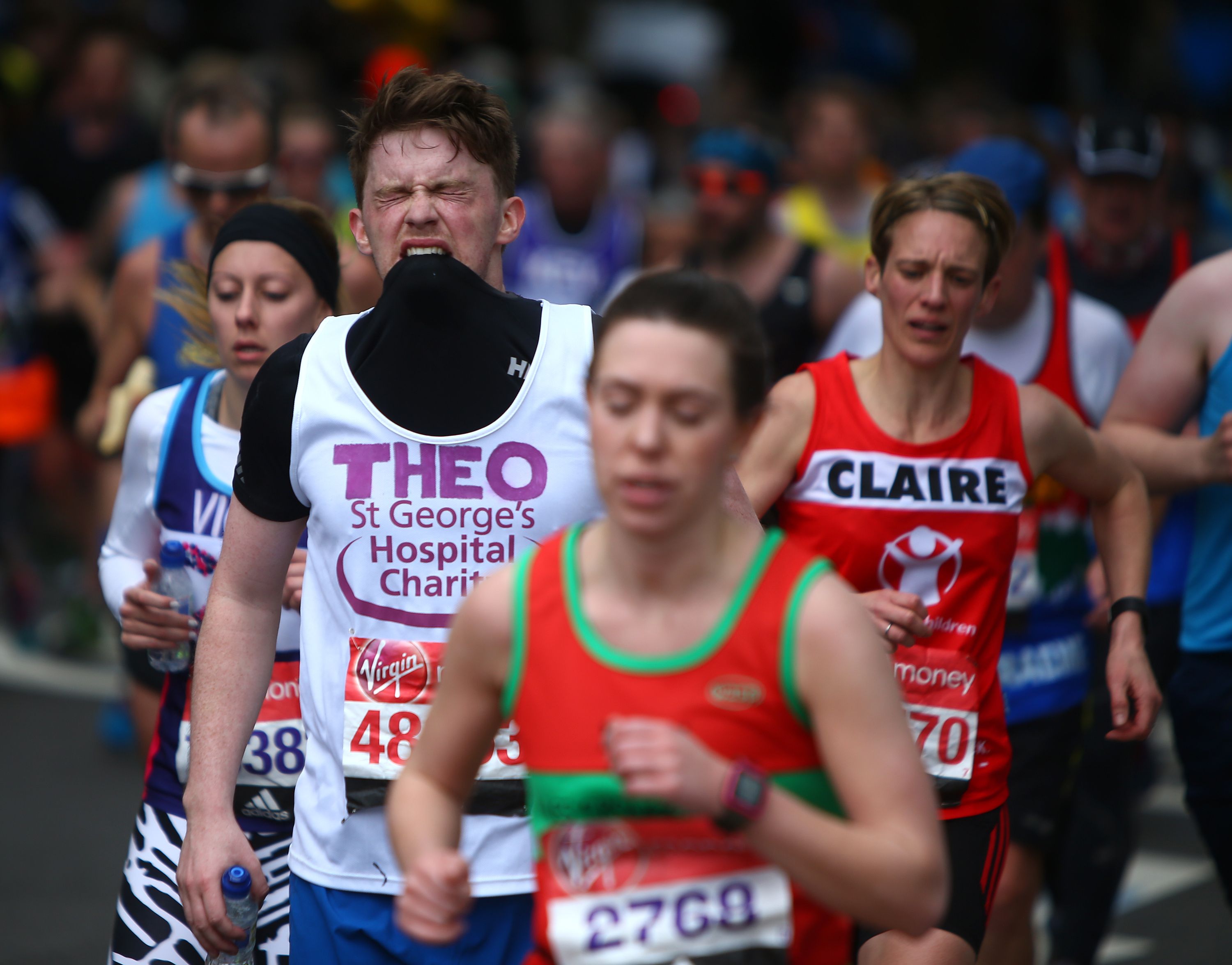
Credit: www.runnersworld.com
Strategies To Avoid Hitting The Wall
Marathon runners often hit the wall due to depleted glycogen stores, resulting in extreme fatigue and reduced performance. To avoid this, proper fueling and pacing strategies, such as consuming carbohydrates and maintaining an even effort throughout the race, can help runners prevent hitting the wall and improve their performance.
Pproper Nutrition And Hydration/p
Proper nutrition and hydration play a vital role in preventing marathon runners from hitting the wall. It is crucial to fuel your body with the right nutrients before, during, and after a long-distance run to sustain energy levels and avoid depletion. Here are some strategies to ensure you stay properly nourished and hydrated:
- Consume a balanced meal rich in carbohydrates, proteins, and healthy fats before your race. Carbohydrates are the primary source of energy for your muscles, so make sure to include foods like whole grains, fruits, and vegetables in your pre-race meal.
- During the race, replenish your body’s glycogen stores by consuming easily digestible carbohydrates. Energy gels, sports drinks, and electrolyte-infused water can provide the necessary fuel to keep you going.
- Consider incorporating protein into your post-run recovery routine. Protein helps repair and rebuild damaged muscle fibers. Opt for lean sources like eggs, yogurt, or protein shakes within 30 minutes of finishing your race.
- Stay hydrated throughout the race by drinking water at regular intervals. It’s essential to replace the fluids lost through sweat to maintain optimal performance.
- Avoid consuming too much fiber or fat before the race, as they can slow down digestion and potentially lead to gastrointestinal issues during the run.
Pgradual Increase In Mileage/p
Another effective strategy to prevent hitting the wall is to gradually increase your mileage. When training for a marathon, it’s essential to give your body time to adapt to the increased distance.
Instead of dramatically increasing your mileage from week to week, follow a structured training plan that gradually progresses your long runs and overall mileage. This method allows your muscles, joints, and cardiovascular system to adapt to the demands of running for longer distances.
By gradually increasing your mileage, you give your body sufficient time to build endurance and improve its ability to utilize stored energy efficiently. This reduces the risk of depleting glycogen stores too quickly, helping you avoid hitting the wall during a race.
Additionally, incorporating rest and recovery days into your training schedule is crucial. Rest days allow your body to repair and rebuild, reducing the chances of overuse injuries and fatigue that can contribute to hitting the wall.
Recovery From Hitting The Wall
Recovery from hitting the wall during a marathon is crucial for the well-being and future performance of a runner.
Rest And Replenish Glycogen Stores
After hitting the wall, rest is essential for the body to recover. Replenishing depleted glycogen stores is key to aiding muscle recovery. Eating carbohydrate-rich foods helps restore energy levels.
Reflect And Learn For Future Races
To avoid hitting the wall in future races, reflect on training strategies and pacing. Analyze what went wrong during the race to make necessary adjustments for the next race. Consulting with a coach can provide valuable insights.
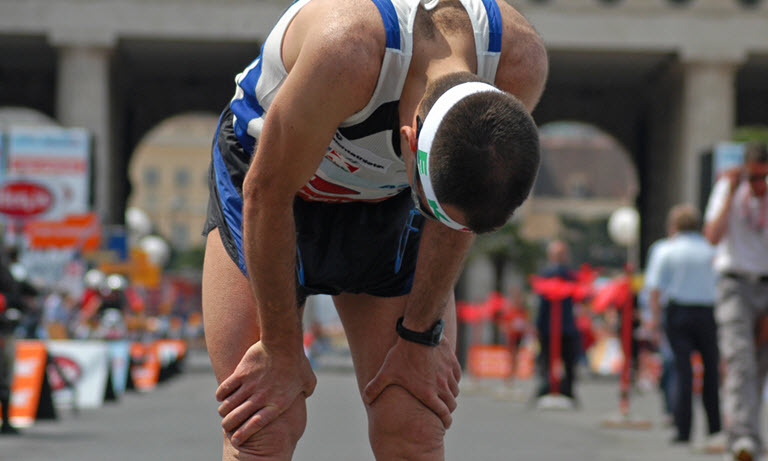
Credit: www.akronmarathon.org
Frequently Asked Questions Of What Happens When A Marathon Runner Hits The Wall
What To Do If You Hit A Runner’s Wall?
When hitting a runner’s wall, slow down, focus on breathing, and stay positive. Hydrate, refuel with carbs, and adjust your pace to get past it. Listen to your body and take short walking breaks if needed. Mental strategies like positive self-talk can also help overcome the wall.
What Does Hitting The Wall Mean In A Marathon?
Hitting the wall in a marathon means running out of energy due to low glycogen levels. It typically occurs around mile 20, causing extreme fatigue and a struggle to maintain pace. Proper training and nutrition can help prevent hitting the wall.
What Happens When An Endurance Athlete Hits The Wall?
When an endurance athlete hits the wall, they experience extreme exhaustion and their physical performance declines rapidly. This happens when their glycogen stores are depleted, leading to fatigue and a decrease in energy. It can feel like hitting a physical and mental barrier, resulting in a significant drop in speed and endurance.
Conclusion
When a marathon runner hits the wall, it can be a challenging and discouraging experience. Fatigue, muscle cramps, and a decrease in energy can cause runners to struggle to finish the race. Understanding the causes and strategies to overcome the wall is crucial for any long-distance runner.
By pacing themselves, fueling properly, and staying mentally strong, runners can push through the wall and achieve their goals. The key is to train both physically and mentally, preparing for the potential obstacles that may arise during a marathon. So, remember, with determination and perseverance, a runner can conquer the wall and cross the finish line.

